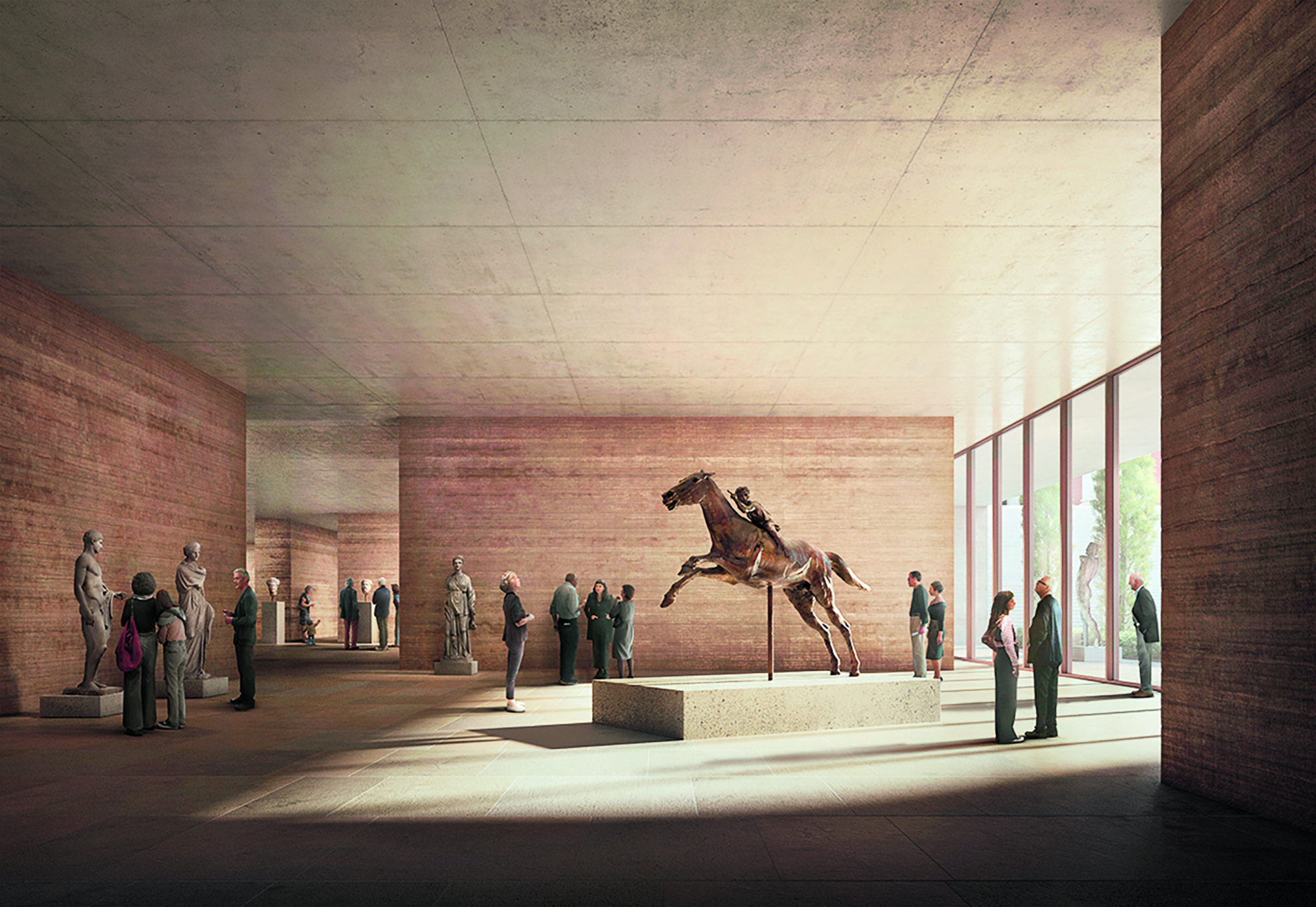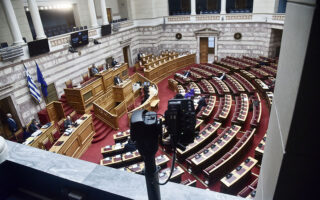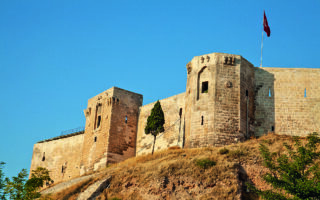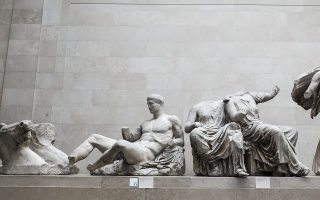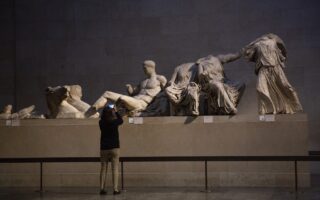Making the National Archaeological Museum shine
Winning design by David Chipperfield Architects, Tombazis & Associates and others to augment home of country’s biggest antiquities collection
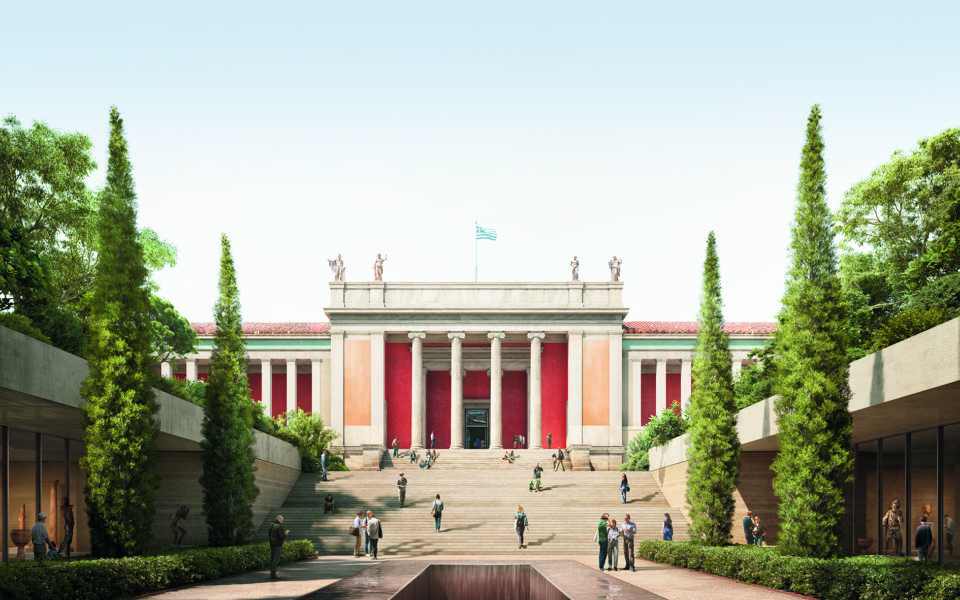
It was selected by an international committee out of a total of 10 proposals by award-winning architectural offices and had become the subject of great anticipation and discussion, but finally the draft architectural plan for a major renovation and expansion of the National Archaeological Museum (NAM) in Athens was presented on February 15 by David Chipperfield Architects – and developed together with Tombazis & Associates, Wirtz International, wh-p ingenieure, Werner Sobek and Atelier Bruckner – in the presence of Prime Minister Kyriakos Mitsotakis, in the museum’s Hall of the Altar.
As David Chipperfield himself said during the event, the dual goal set from the beginning by the international committee that evaluated the plans was, on the one hand, to decongest the museum’s collections and, on the other hand, “to create a stronger relationship between the museum and the city.” The challenge, he continued, was “to build in front of a 19th-century building without obliterating it.” Stavros Gyftopoulos, an architect of Tombazis & Associates, presented an indicative tour of the premises and referred to the above-ground connection of the museum with the historic Art Nouveau building of the Acropol Hotel across the street, which has also been renovated.
The prime minister spoke of the “opportunity to revive an entire neighborhood” and noted that the government’s intention is that all studies be financed by private donations, while the renovation of the museum and the surrounding area by national and European funds.
The garden
The architectural blueprint of the museum draws its initial inspiration from the existing neoclassical building by German architects Ludwig Lange and Ernst Ziller (built 1866-1891) and makes the main building the starting point of the design, framing it with a garden reminiscent of 19th century parks.
The “base” of the central building will extend to Patission Street, strengthening the museum’s relationship with the city. The extension will be located above street level and will house two underground exhibition spaces (covering approximately 20,000 square meters), which will host permanent and temporary exhibitions, as well as the museum’s main functions: the ticket office, a restaurant, a shop and an auditorium. Entering from the main entrance on Patission Street, visitors will see a section of the exhibitions, parts of which will be surrounded by rammed earth walls, while passers-by will also have visual contact with the new exhibition spaces that will make use of natural light.
The garden, which will be designed on the extension by Wirtz International Landscape Architects of Belgium, will be accessible from all sides and elevated, maintaining a distance from the hustle and bustle of the city. It will include platforms, gravel paths, grassy areas, as well as clusters of pines and bushes. At the heart of the complex, a courtyard will be a meeting point for museum visitors and citizens.
‘The task of the extension is not to compete with the existing building, but to strengthen it and also to strengthen the presentation of the collections’
“In our opinion, the task of the extension is not to compete with the existing building, but to strengthen it and also to strengthen the presentation of the collections,” Chipperfield told journalists earlier in the day, when he presented the details of the plan. “The task comes with some very difficult questions from the beginning (…) How to build something in front of the building that doesn’t confuse its significance and history, but at the same time has a status, the extension has its own status,” the British architect explained.
The question of visibility, added Alexander Schwartz, partner and design director at David Chipperfield Architects Berlin, “is about how the museum will shine again as an important landmark of the city.”
Sustainability
Having worked on museum projects in over 25 locations around the world, Chipperfield and his colleagues follow modern standards of quality and sustainability (strategies that will also be followed at the NAM, for example through the extensive use of clay, water and local construction materials), while their experience in the cultural field allows them to also plan for the presentation of archaeological collections. “The new extension shouldn’t be cluttered with hundreds of objects… the new wing should emphasize the spatial and scenographic qualities,” Chipperfield said. “No museum should really fix down the position of their collections. It changes all the time. It’s good to anticipate different ideas.
“Our concept is, whereas this building is more a sequential series of repetitious rooms, the new wing is a more dynamic landscape, visually and physically a permeable,” he added.
A question for all museums, whether they house antiquities or contemporary art, is how to make their content more current. “In the case of this museum there’s an opportunity to present the material in a different way,” the British architect said, adding that the role of museums has expanded beyond the scientific and academic, to that of entertainment. “Entertainment has a negative value… I think as the ideal of that the museum is a place as well as a series of objects. One of the questions for museums is how to keep a balance between tourists and citizens. This question is more difficult for the national collections… As tourism’s figures become bigger and museums become more touristically attractive, how do you balance that with the city?”
Especially regarding the relationship of the museum’s garden with visitors and citizens, landscape architect Peter Wirtz noted that the new green space will not only provide an opportunity to rest after a visitor’s intellectual exertions, but it could also provide respite for students on their break at the neighboring university.
The timetable
The degree to which the old building will be renovated and the possibility of closing it temporarily as work is carried out, is still under discussion, Chipperfield said. Asked about the project’s timetable and budget, the architect was restrained in his statements. Concerning the budget, he said that there is an initial estimation, which however, also depends on political factors as well as the capabilities of “the client” in terms of the ecological interventions that have been proposed. He did say that work is planned to start after the elections, during the summer. “There are three kinds of timelines: the political, the financial and the practical,” Chipperfield said. “All of these will have to be coordinated.”
Also on February 15, the government published the new law that turns the NAM and four other large institutions into Public Law Legal Entities, giving them more independence, a development that has drawn fire from the unions of archaeologists and Culture Ministry employees.
